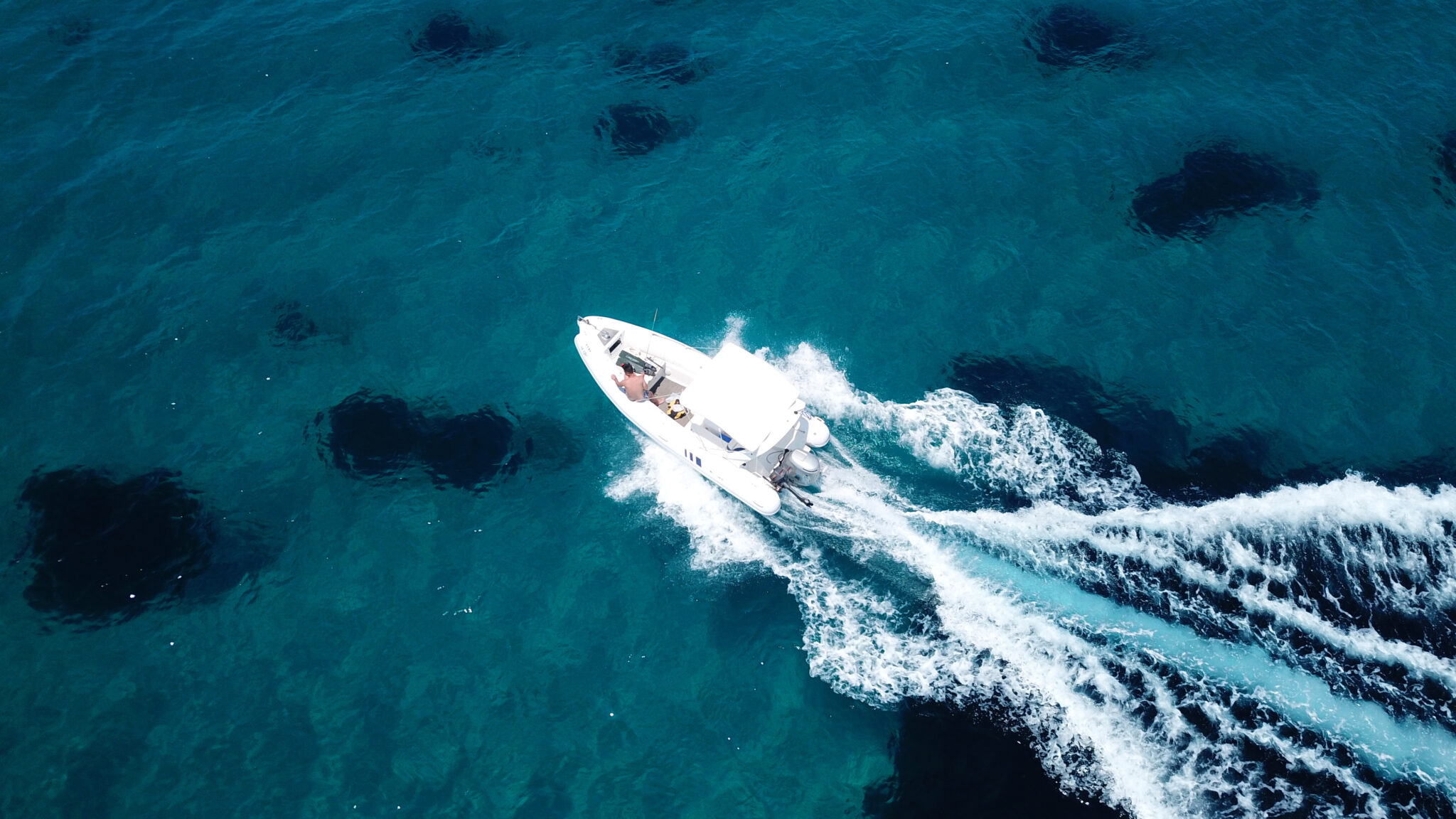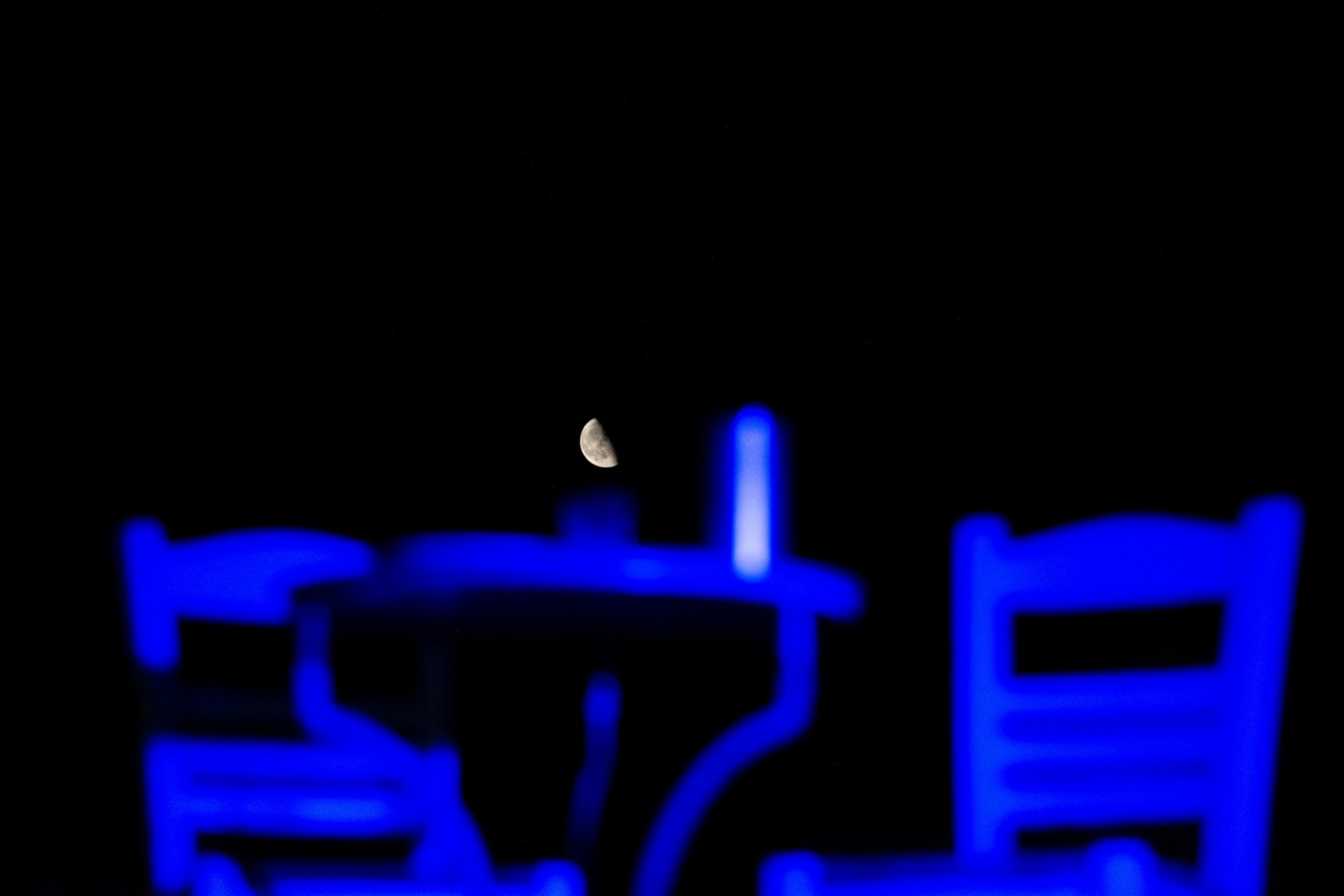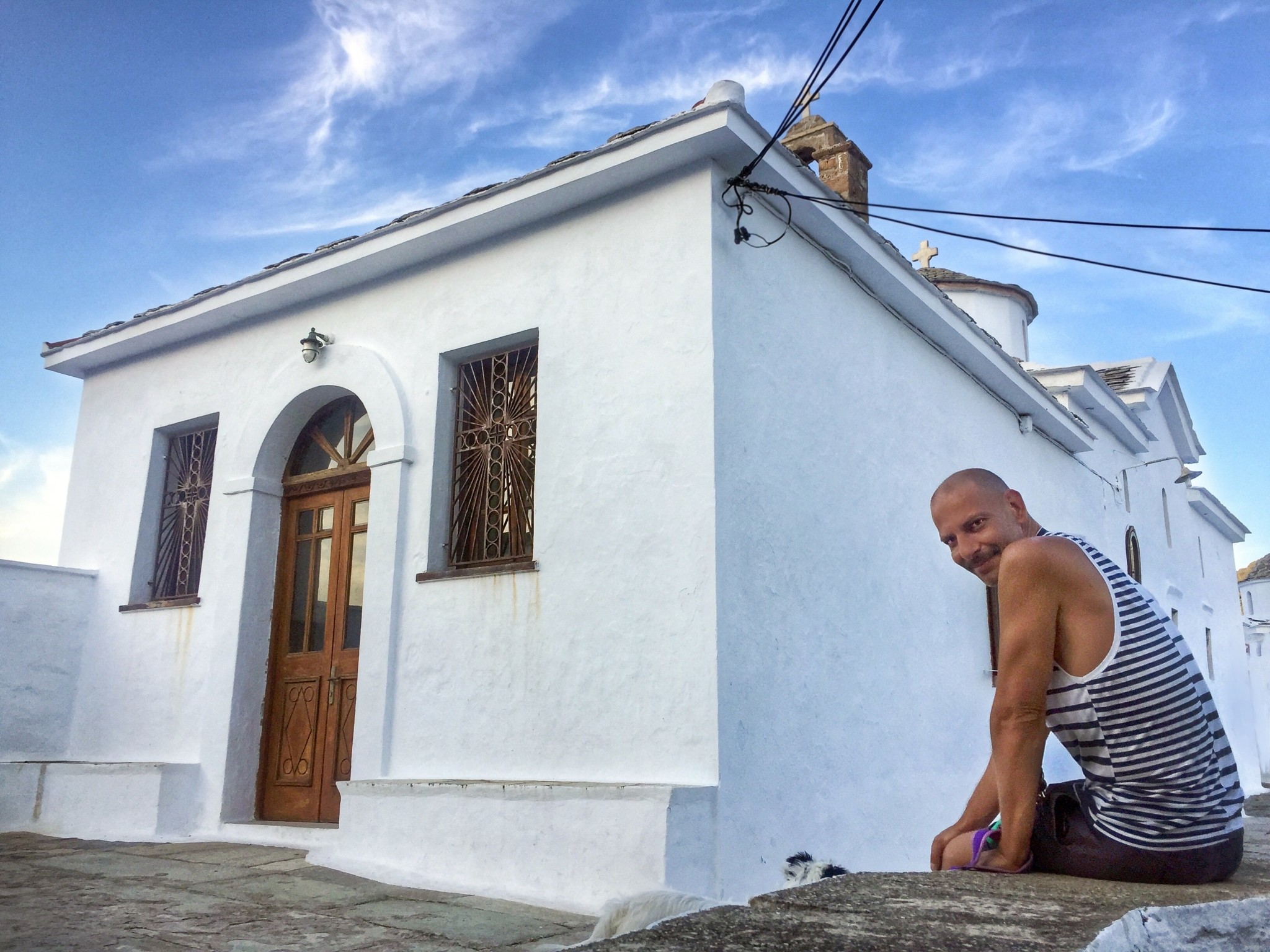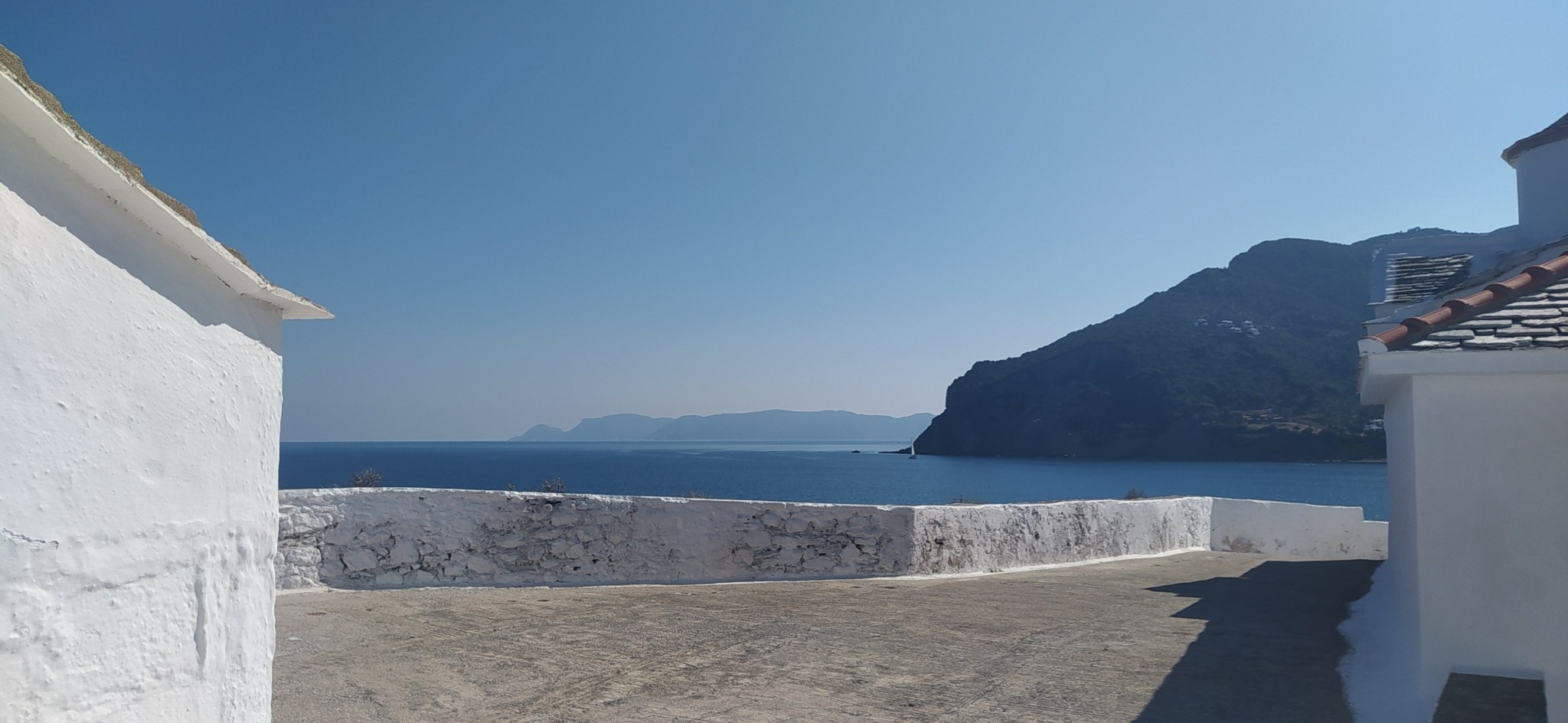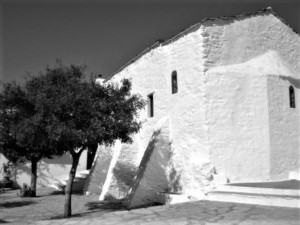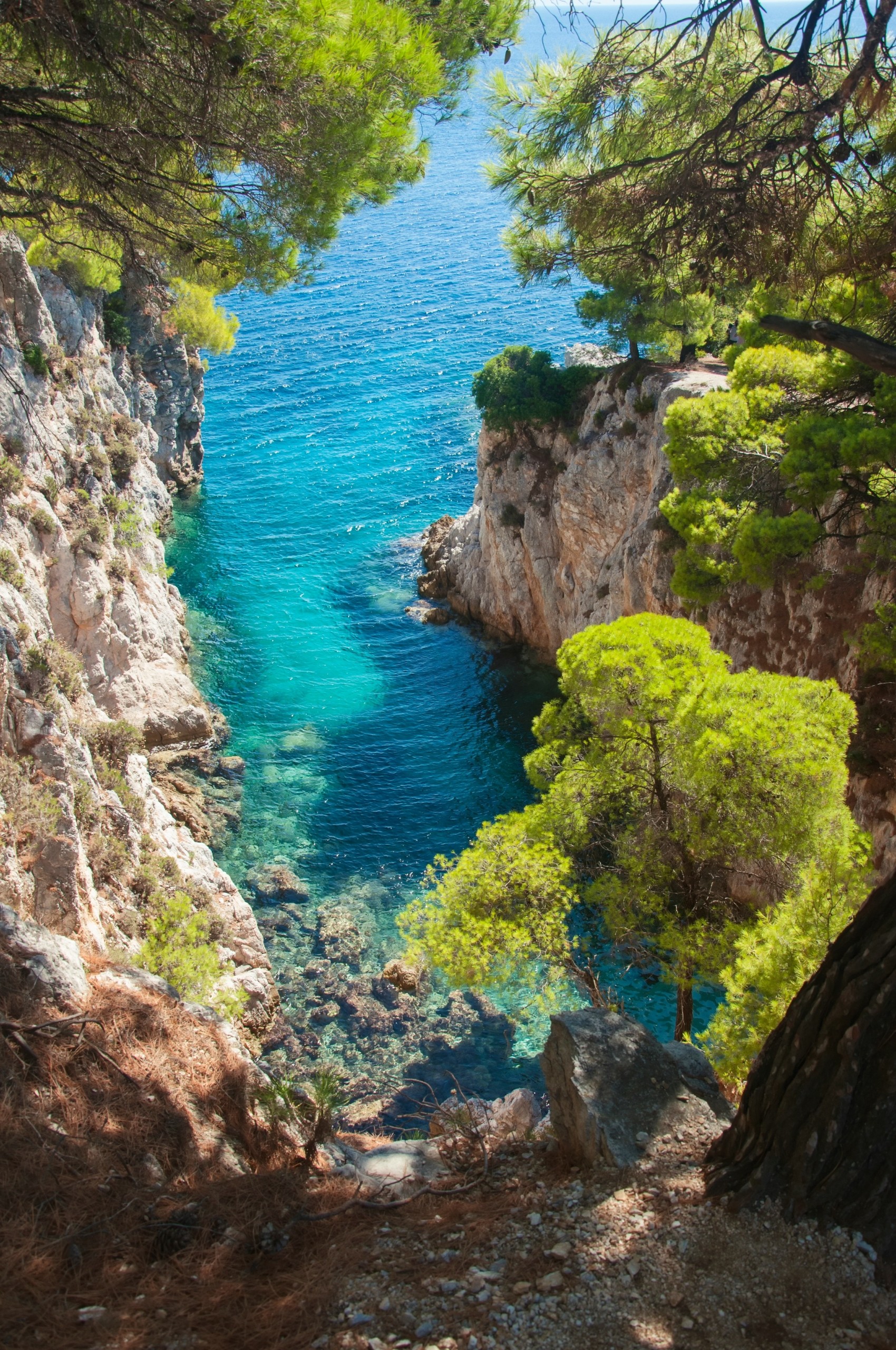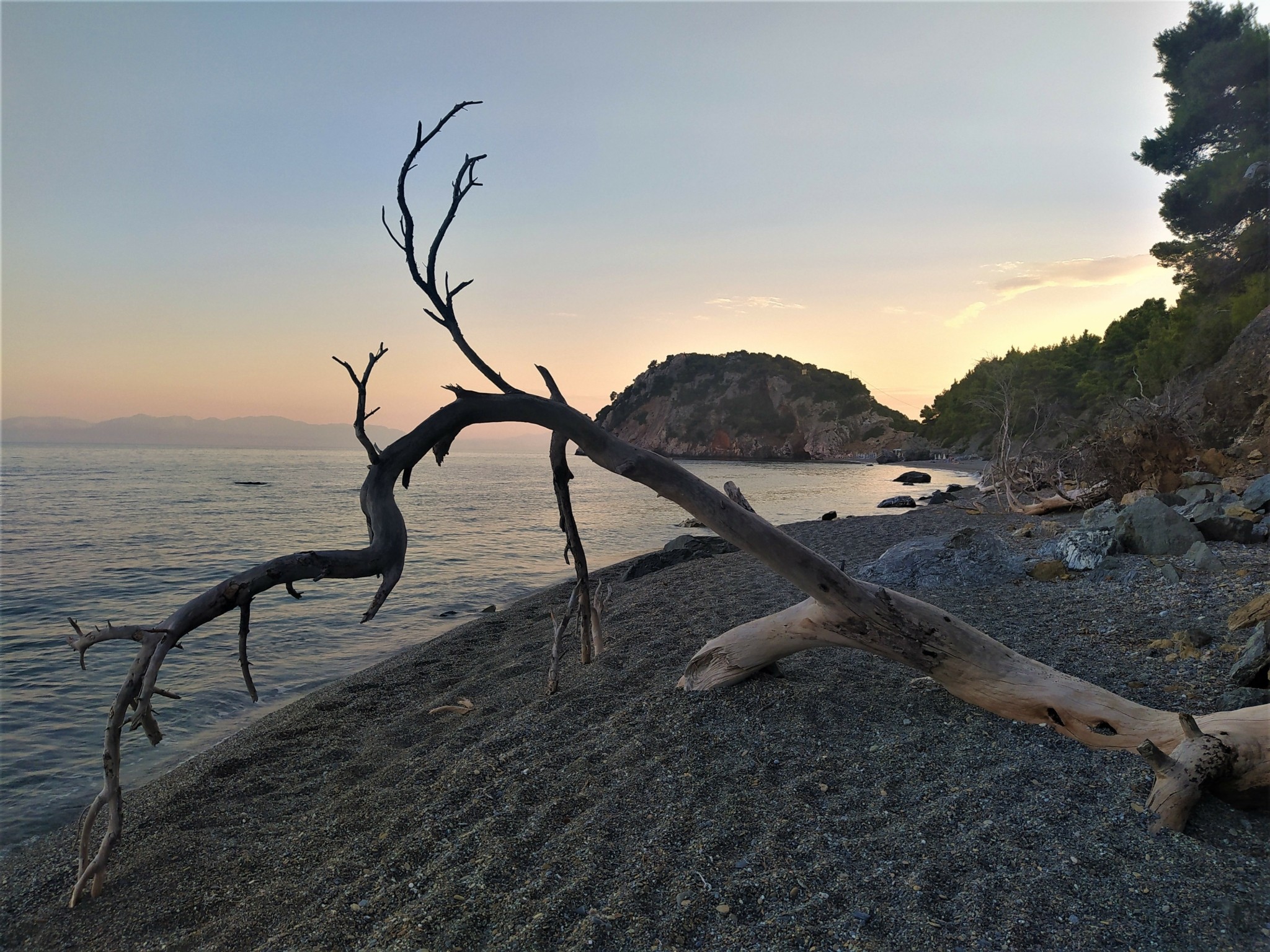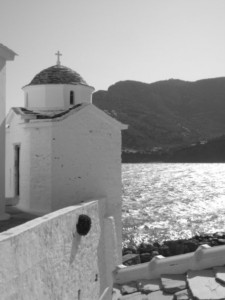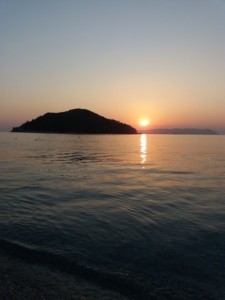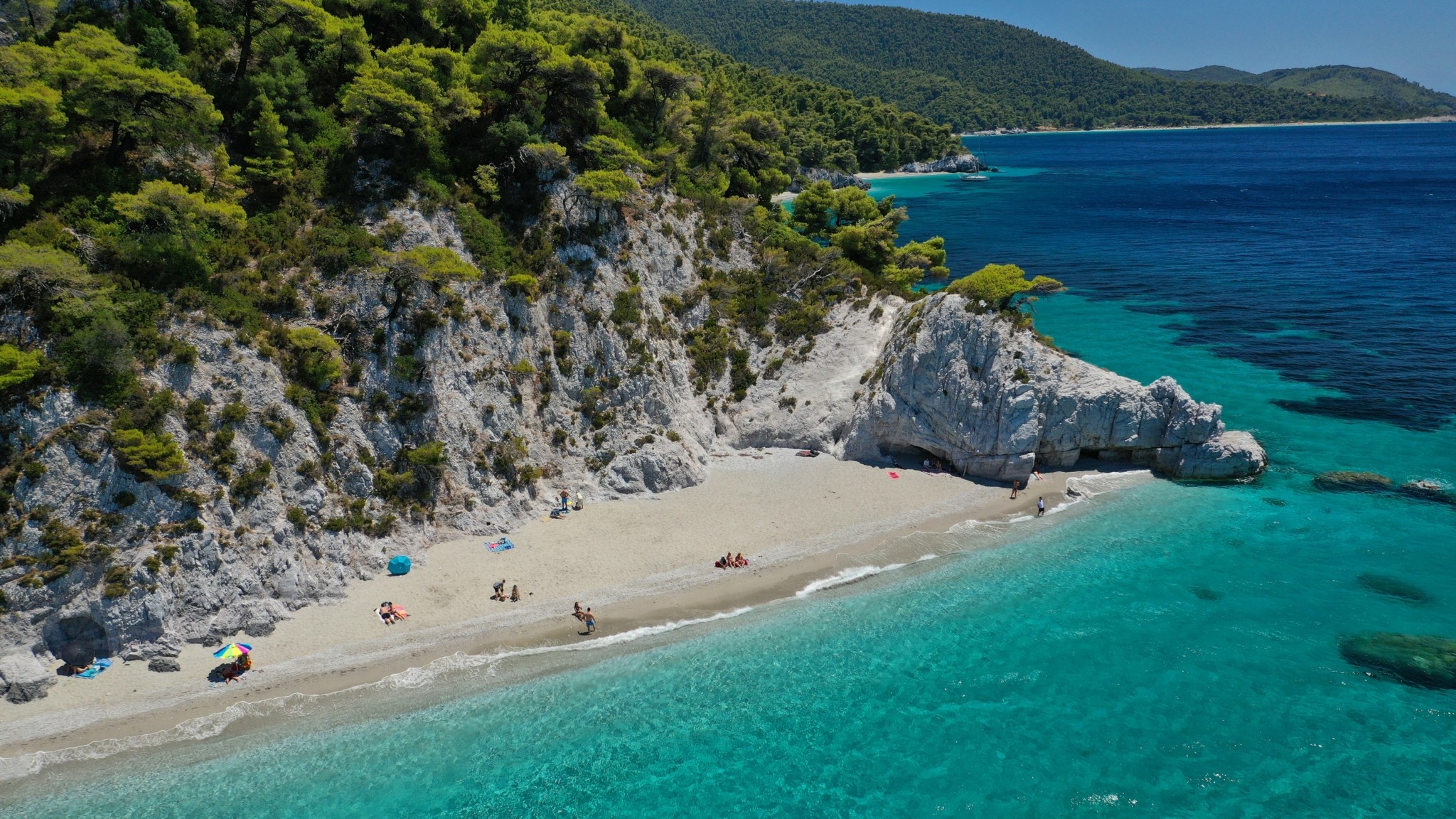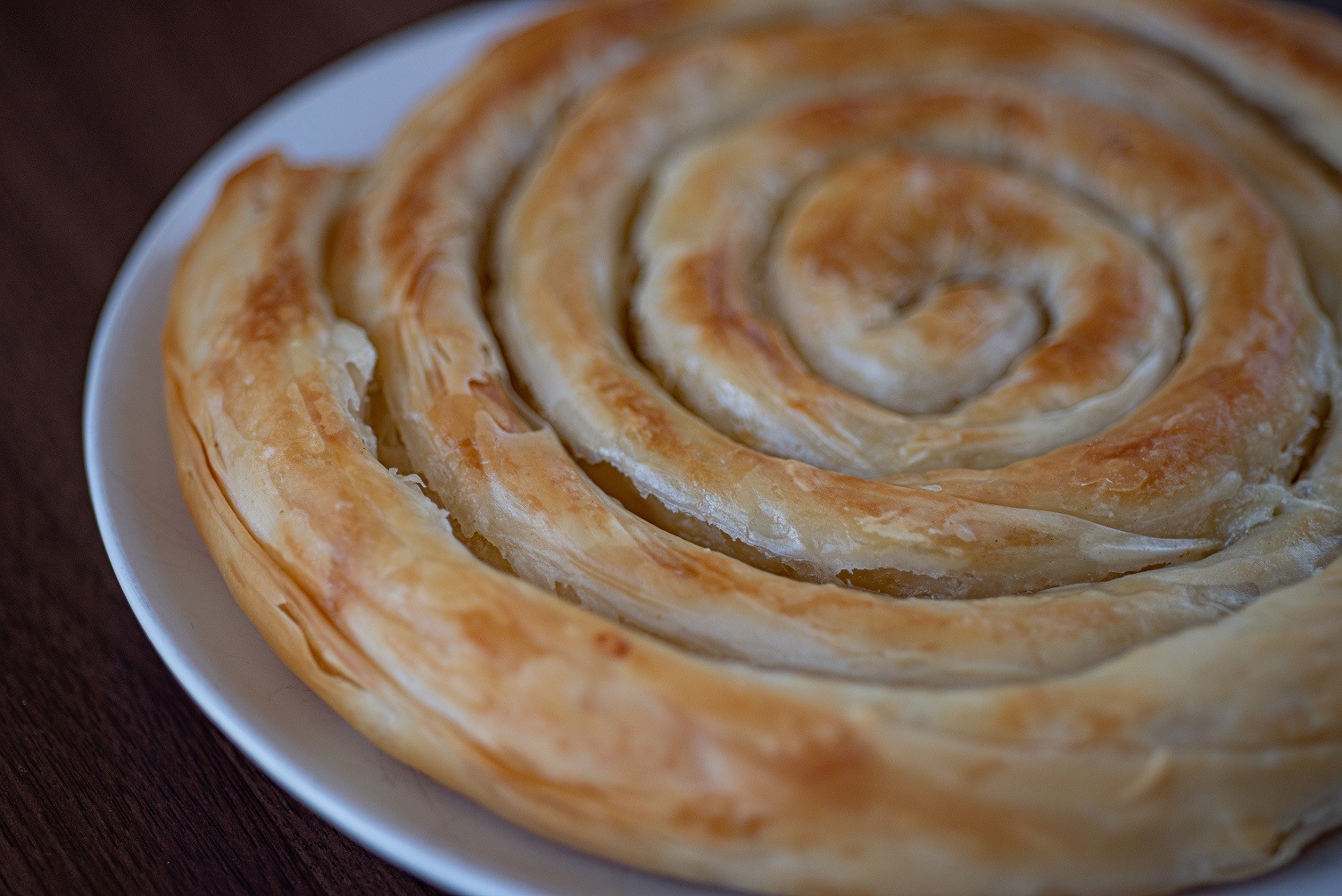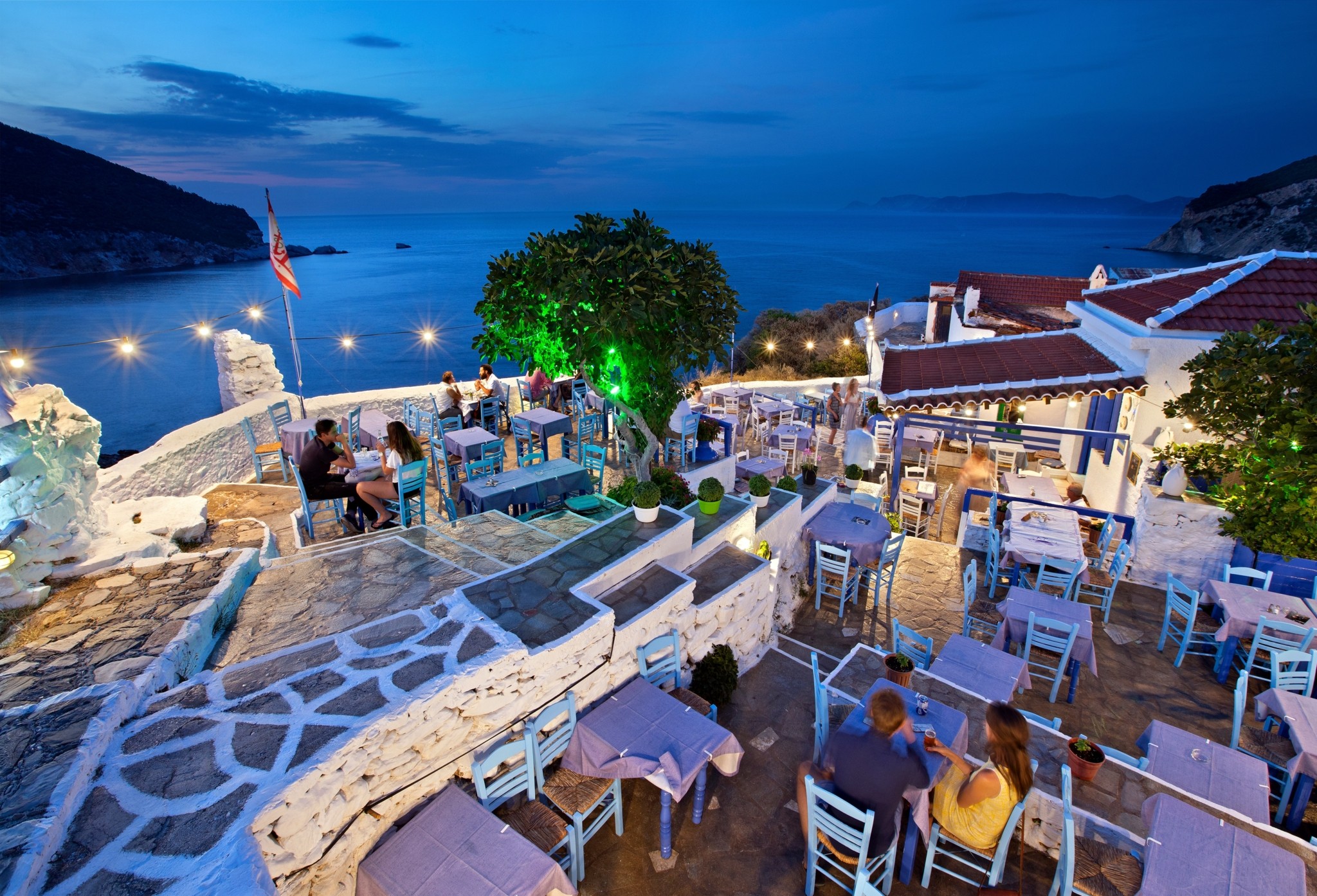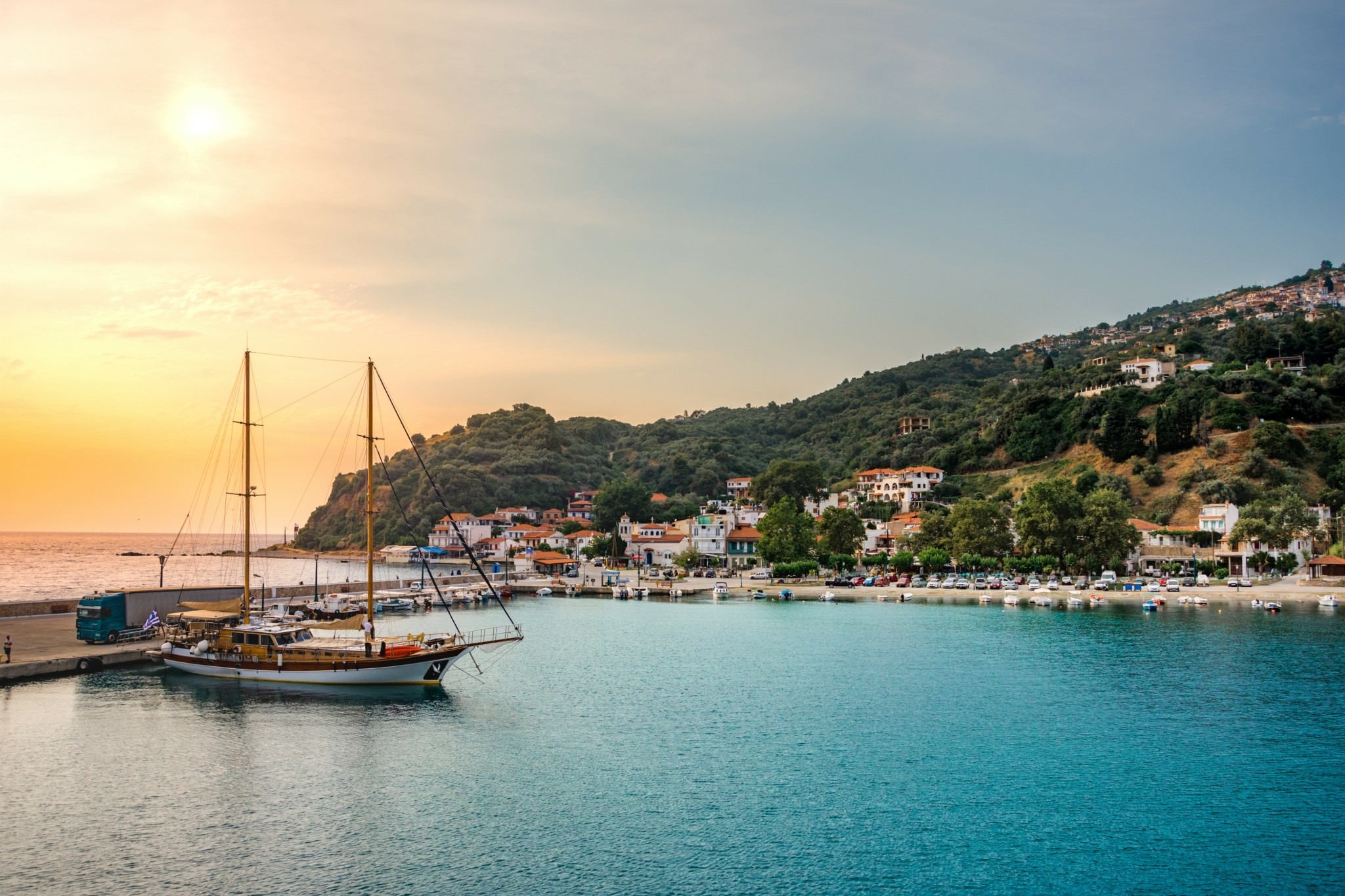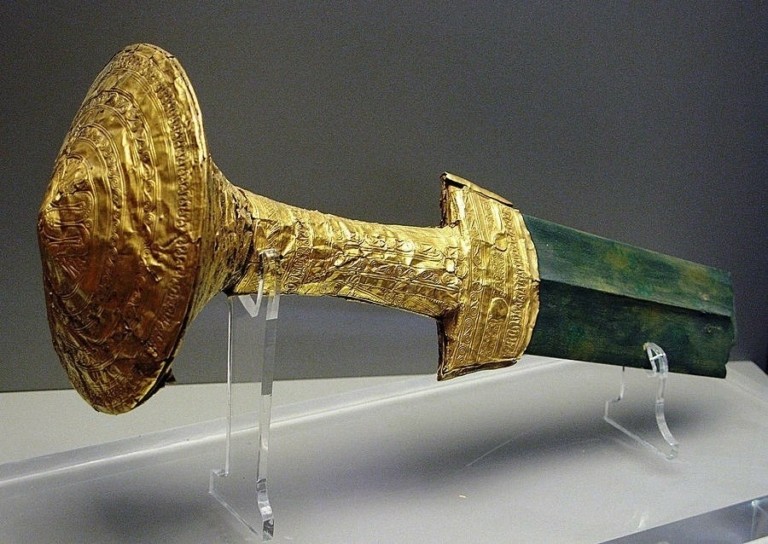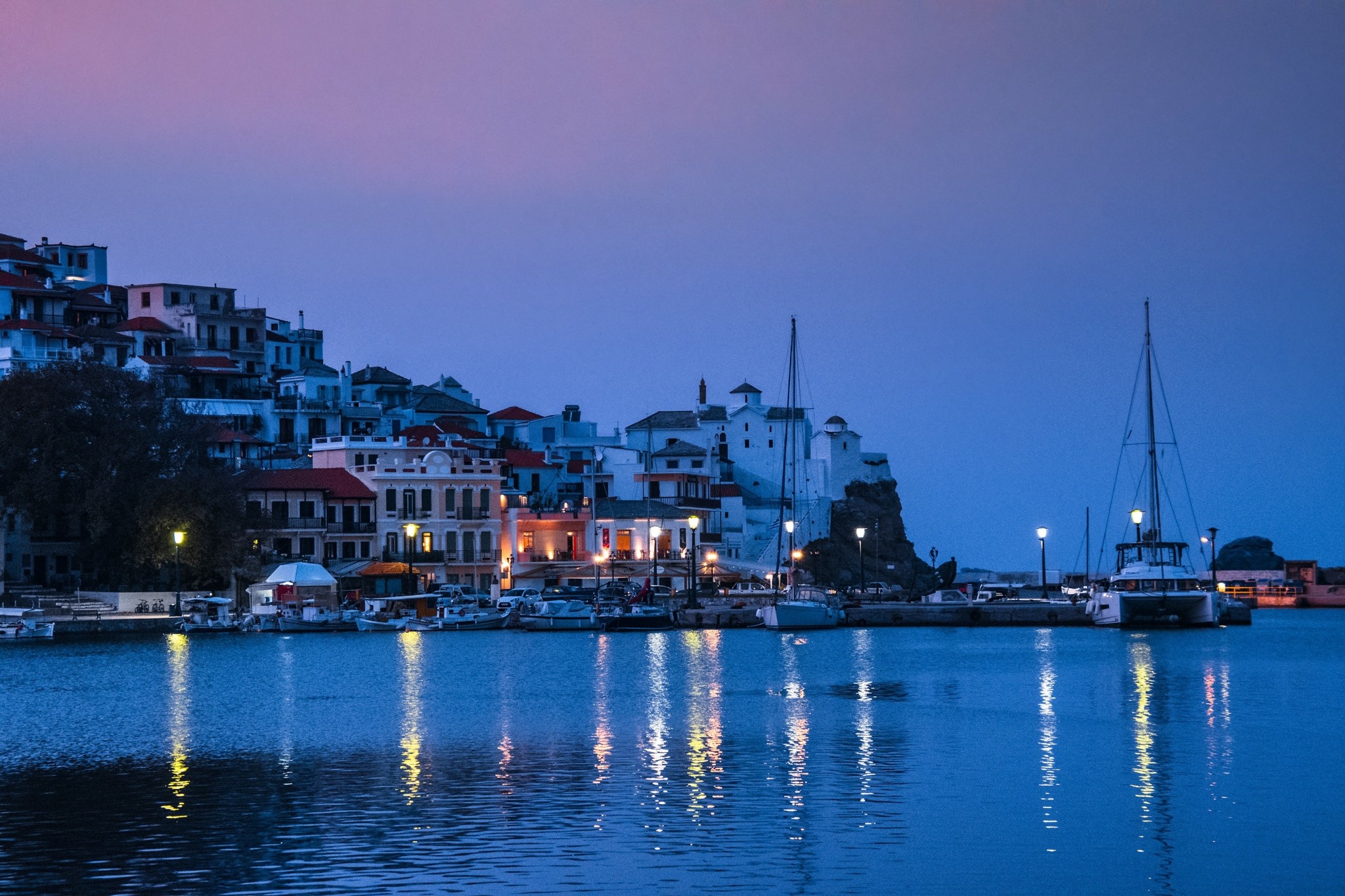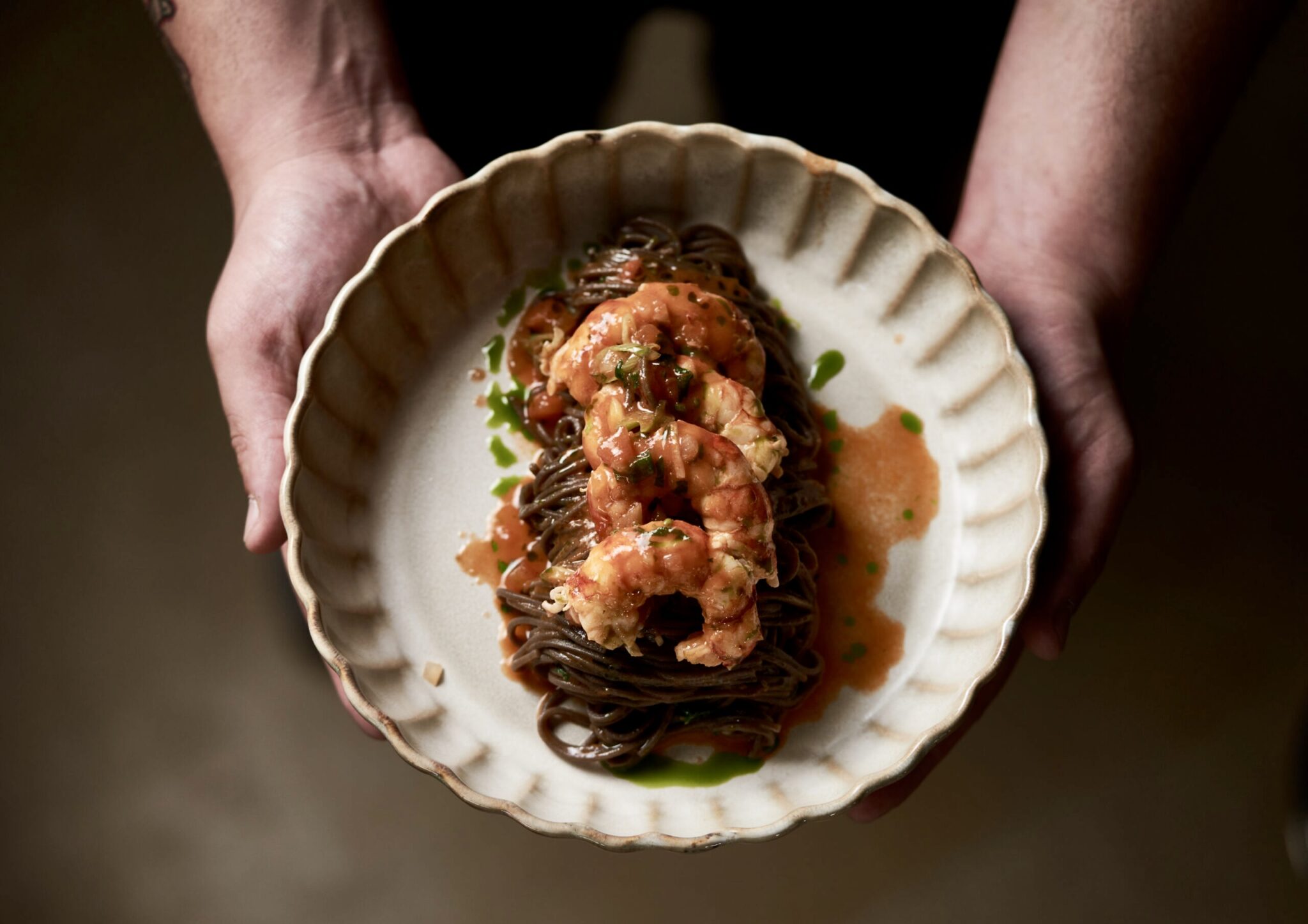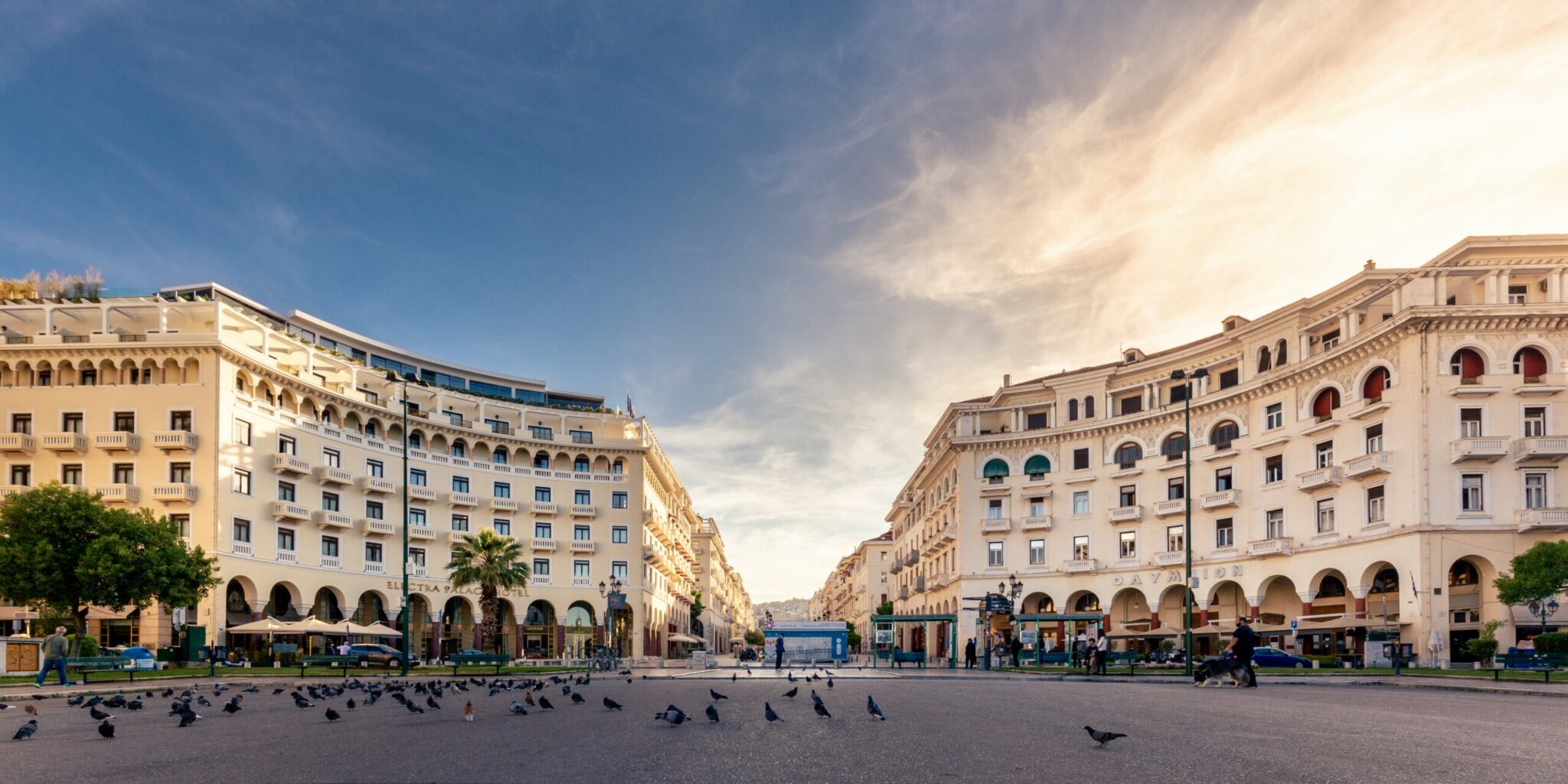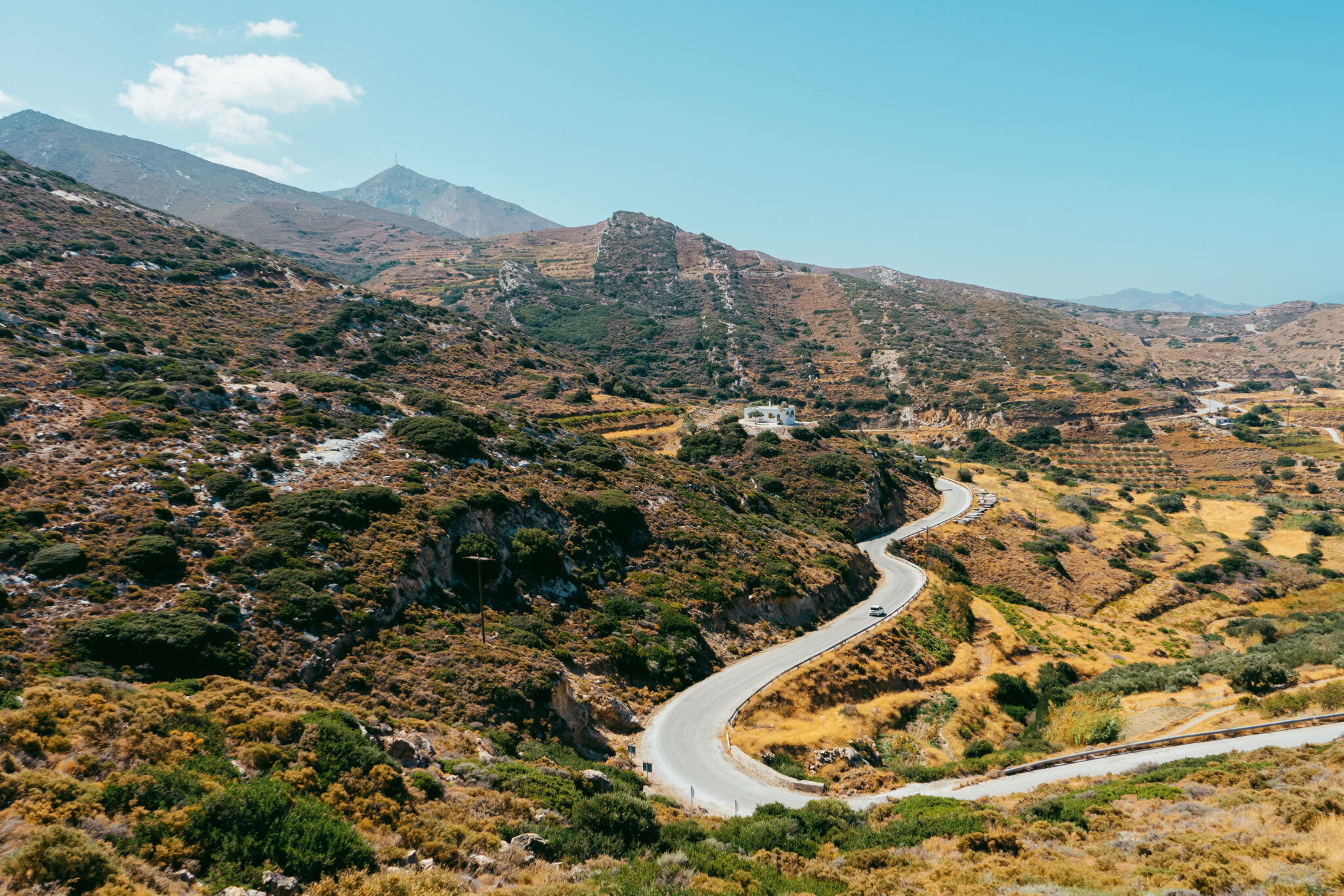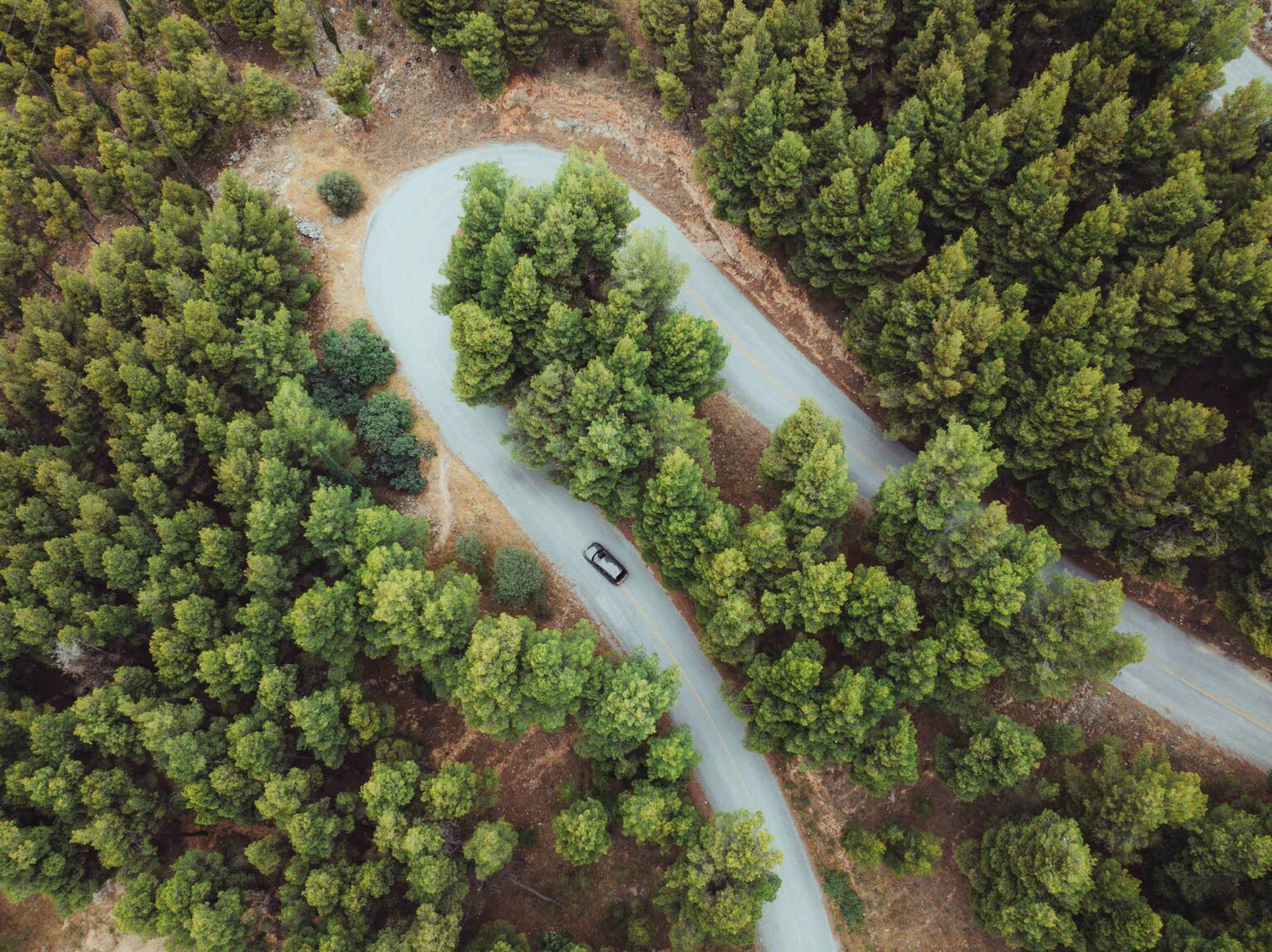Fashion designer Epifanios Skiathitis writes about his island well before it became famous from the filming of the movie Mamma Mia –and afterwards.
When I was a kid, Skopelos seemed like a huge island to me. There were mountains, castle-monasteries, but also stunning beaches with pine trees stretching out to the sea. Hora –the main town on the island- was small enough for me to enjoy a slice of freedom and independence from a young age already, and, at the same time, too big for me to explore each of the cobbled streets where I used to play.
There was green and blue; actually, a lot of green and a lot of blue. There was a discotheque, but also many late night venues dedicated to rebetiko music (rebetiko is a beloved Greek music genre with great cultural history and, thus, part of Greece’s Intangible Cultural Heritage), where many present-day Greek singers and musicians made their debut.
The island was well-frequented but also peaceful. I remember my brother and I leaving the house in our swimsuits, with our flip-flops and a towel, going for a swim in Plaka beach, which lies behind the church of Panagitsa of Pyrgos (Holy Mary of the Castle), without giving it a second thought, since it was a five-minute walk from our house. Back then, Plaka beach was full of children and its characteristic rocks had been given names; Vasilikos, gaidoura (which stands for female donkey in Greek), paximadakia and Hadoula. The latter was only for the brave ones, since it took a lot of courage to dive from there.
I remember weekends and celebrations in the “huts” (two-storey farmhouses, where the peasants lived during the harvest period) with friendly families and relatives, where the adults cooked and feasted, while we played in nature in a post-hippie 80s commune.I remember also the filming of a children’s TV series, very popular back then, in which many of my friends and classmates participated. Growing up in such a place was pure blessing.
Skopelos’ history goes back to the Mycenaean years
It is an island that has been inhabited almost continuously since ancient times. It has passed through almost all historical periods: from antiquity and the Athenian alliance, to Byzantium and the Venetian occupation. Skopelos evolves and adapts to the needs of each era, while it has also known periods of great prosperity through commerce, as it was an important stop on the route to the Black Sea. Skopelos was always travelling.
There were once ship owners, captains and a great tradition in shipbuilding. Moreover, there were many shipyards on the island in the past. But, over the years and with the prevalence of the steam locomotive (which changed the landscape of transportation), this activity was deemed obsolete and soon came to an end. Therefore, many Skopelians left the island or engaged in agriculture and animal husbandry, since the island’s terrain has always been extremely generous. During the 1960s, when Greece entered dynamically the international realm of tourism, the first tourists began to timidly arrive on the island. However, the great touristic development came in the 1980s and has been growing smoothly ever since, with tourism now being the inhabitants’ main occupation.
What has remained intact on the island is Hora, with its traditional architecture, which has been kept alive thanks to the love of both Skopelians and foreigners. With only a few discrepancies, the colour and character of the island have generally been preserved.
In the late 1970s, a presidential decree designated Skopelos Hora as a preserved area. In addition, Skopelos’ forests were protected from touristic construction, so we can enjoy them to this day.
I absolutely love Milia beach
Located on the west side, Milia is one of the largest beaches of the island that because of its size, offers many options; a part of it is serviced, but there is also a more quiet part with plenty of space to lay out your towel. Milia beach has crystal clear waters and a view of the islet of Dasia which literally looks like a floating forest. Shortly after Milia is Kastani beach, serviced and cosmopolitan, with the same view but not as large as Milia. Here, in Kastani beach took place the filming of the movie “Mamma Mia”. I have witnessed its pristine greatness in the past, so now that it has become abuzz I still cannot get used to it. However, you can still enjoy its emerald waters and magnificent views, as the sun sets on neighbouring Skiathos.
Stafylos is the first beach one finds within four kilometres from Hora. It is named after the son of Ariadne and Dionysus, first king of Skopelos in ancient times, whose tomb was found on the beach in the 1930s and his sword is today on display at the Archaeological Museum of Athens. After crossing the beach of Stafylos, you reach another hidden south-eastern beach, Velanio. About the same size as Staphylos but much quieter and for that reason one of my favourites. Note that Velanio is partly a nudist beach.
I go to Limnonari on windy days, a sheltered bay with fine sand and crystal clear waters. Panormos is yet another stunning sheltered bay with the deepest blue waters you have ever seen; an easily accessible, picturesque pebble beach, offering many dining options and therefore ideal for families. Next to it are the small beaches Andrines, named after the pirate Antrina who used the sheltered bay of Bló and Panormos to hide her ships, while legend has it that she hid her treasure in the area.
Glisteri is a northern beach, beautiful and serviced with straw umbrellas and stylish sunbeds, offering a completely different landscape from the other beaches.
I also like Hovolo, a gorgeous beach with small pebbles and an exotic environment. Remember to bring a sea umbrella with you, water and some snacks, as the beach is not serviced. If you swim past the rock, towards the small beaches of Hamogelo and Neraki –accessed only from the sea-, you will feel like a castaway on a tropical island.
Before the film “Mamma Mia”, when I was asked about my homeland, I had to give a lot of information but, as Skopelos had not yet been discovered by the masses, I was just clutching at straws –in the end I always had to refer to the neighbouring famous island of Skiathos. However, after the film, Skopelos became world famous.
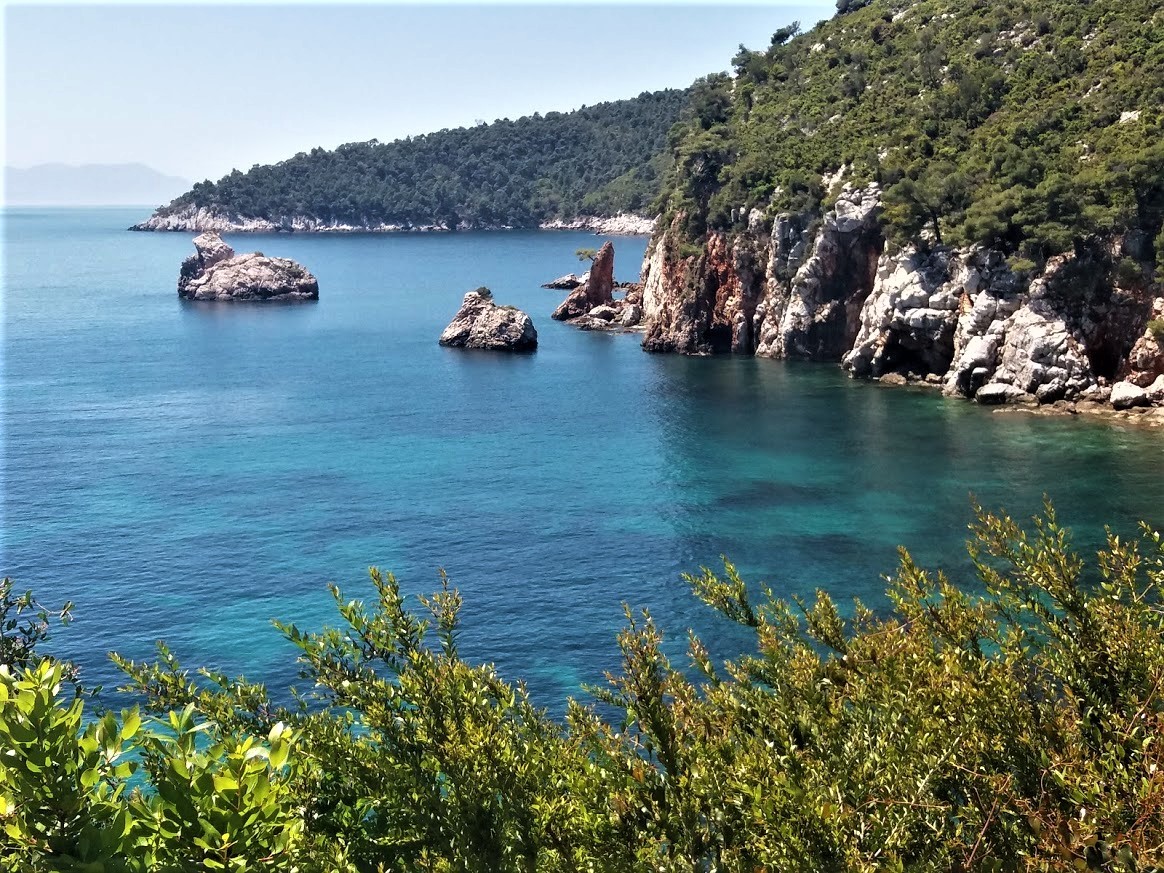
Ιt is named after the son of Ariadne and Dionysus, first king of Skopelos in ancient times Epifanios Skiathitis
My favourite walk in Hora
I enjoy strolling around the alleys of Hora during the day and especially in the dripping golden morning light that makes everything gorgeous. I like to saunter in the oldest neighbourhood inside the Castle, the Church of the Nativity of Christ or, as natives call it, Christos, where my parental home is located (actually belonging to my mother, as is customary on the islands). The route from the Panagitsa of Pyrgos to the Castle and from there, through the narrow streets of the old town, to the beach requires stamina, as Hora is amphitheatrically structured, but it is worth the effort.
Hora was built over the ruins of ancient Peparithos, which was located in the Castle. Its fortification was built on the south-western side, since the northern side was already protected, due to the morphology of its terrain. During their time on the island, the Venetians restored the Castle and built the bishopric, which survives to this day. Hora is not easily visible when approached from the sea; only when the boat gets deep enough into the bay does its beauty unfold.
The reason why Hora was built in this particular way was none other than to protect it, as Skopelos was a wealthy island and had been highly developed since antiquity.
Peparithos wine, to which Aristotle refers, was known from Marseilles to the Black Sea. For a long time piracy kept Hora within the walls of the Castle, but over time and after the threats of piracy began to disappear, it began to expand towards the bay, where, in its heyday, Fragomachalas was gradually developed with its large mansions and commercial streets. The architecture bears witness to the historical evolution of the island. The island cube-shaped houses with small windows and stone roofs coexist harmoniously with the later-built houses with corbels and balconies, which borrow many elements from neighbouring Pelion and Macedonia, adopting them in a more minimal island form. The dominant materials are stone, slate and wood.
After 1830, when Skopelos was annexed to the first Greek state, the area behind the beach and around Agios Michael up to the parish of Panagia was developed. There, one finds scattered old stone mansions with neoclassical elements.
Hora boasts countless churches, the oldest being Agios Athanasios, which dates back to the 11th century. In the neighbourhood of Christos, which was the first to be created outside the Castle in the 17th century, you will find numerous churches, many of which were built with donations from the families of the sailors who lived in the area. The majority of these churches are basilicas. Agios Mihail in Hora is of particular interest, as the ruins of the ancient church on which the Christian church was built have been incorporated.
The cobbled streets, the blossomed courtyards, the arches and the view of the harbour from above are the features that render a walk in Hora a unique experience. You understand immediately that it has always been alive and thriving in a very special way –a place unlike any other in the Aegean.
Local specialties and favourite dishes
Try the famous Skopelos cheese pie, which for me is the best breakfast, the grouper stew, the local goat, the sweet pumpkin, as well as the onion and sweet cream pies. Avgato is a traditional spoon sweet, made from a special variety of white plums that I have not seen anywhere else. Rozedes and chamalia are traditional Skopelian sweets made of walnuts and almonds respectively. Skopelos also produces excellent pine honey, which is never missing from my cupboard.
There are many restaurants and taverns on the island that all serve delicious food. From the taverns on the old port I single out Molos restaurant, Kyratso’s Kitchen, Aktaion restaurant and Dimitrakis’ tavern on the coastal road. In the enchanting harbour of Agnontas you will find Korali restaurant and next to it Pavlos fish tavern, where we used to go as a family on Sundays, when I was young.
I really like Perivoli restaurant because it’s very quiet even in August, but you have to make a reservation beforehand. The beach of Hora is also ideal for your morning coffee, since it is full of shady plane trees.
There are many choices to suit all tastes. Karavia café is my personal favourite. It is located in front of the new harbour –where there are many more other options-, overlooking the old harbour and Platanos Jazz Bar –the oldest café bar on the island, still rocking out at nights.
The local dialect and the lost vowels
We don’t pronounce the word ending syllables like Thessalians, while we also speak with both tonality and rhythm like most islanders. It goes without saying that we have our own words, with my favourites being “xargu”, which means on purpose, and “rovada”, which means to persist in something for no reason.
Skopelos is a gentle and laid-back island
The island’s colour palette is very harmonious, which makes it ideal for relaxation (in Itten’s colour wheel green leads to blue and vice versa). Hence, countless visitors love it so much as to return every year. Many of them have bought houses and have become permanent residents of the island, moreover. For instance, British pop singer Jessie Ware, who has been visiting the island with her parents ever since she was a child, and who got married on the island in 2014. Skopelos has its own colour and rhythm that make the island particularly attractive for anyone who really wants to escape the frenetic pace of everyday life. Because of its size, it is an easy to get around island, without ever being boring.
Skopelos’ nightlife is multidimensional without exaggeration. Rather than being the main reason to visit the island, it functions more as a supportive element, so that you have nice options for your holiday evenings. Lovely bars and venues with live music for the most part, but there are also a couple of nightclubs for those who want to party until the break of dawn. In Vrahos bar you will relish fragrant cocktails with a view, while at the neighbouring Skala cocktail bar you can enjoy nice drinks and loud music. In the narrow streets of Hora you may find a place for every taste, such as the sophisticated Oionos Blue Bar, the “hidden” Paraporti and the youthful Screwdriver in “Sofadakia”, the old commercial street of the island.
In Mercurius cocktail bar you will have your drink and listen to Latin music in a typical Skopelian house featuring a roof deck, while a little bit further, in an old warehouse in front of the harbour, Ntokos bar, you will listen to epic music.
La Costa, Spira brewery –producing the homonymous local beer- and Veranda bar, right behind Agios Mihael, are also nice places for a drink and a chat. Skopelos has also great tradition in rebetiko music. Skopelian Giorgos Xintaris, one of the most famous rebetiko musicians, has put up a flag at Kastro and, every night, he and his sons along with his company sing rebetiko songs without microphones.
Where’s the best view?
- From Pano Panagitsa (a small church before the Monasteries of Timios Prodromos and Agia Varvara, just opposite Hora), you can see almost the entire northern, shaped by the strong winter winds, rugged part of the island, as well as the neighbouring Alonissos and the island of Ai Giorgis.
- The view from the castle of the island to the sea, especially early in the morning is breath-taking.
- Descending from Pyrgos to Elios, a route that runs through pine forests, you will enjoy incredible views of the sea.
- The winding road after Stafylos offers stunning views of the beach and the peninsula from above, as well as the desolate islands in the distance. When there is no humidity in the atmosphere, you can see all the way to the mountains of Evia.
- The sunset at Agnontas is fantastic, while the route from Panormos to Glossa is full of magical images.
- The view from Glossa, the second largest settlement on the island, is magnificent at all times and one can see the whole western side of Sporades up to Pelion.
- Just behind Glossa, to the east, is the now famous Agios Ioannis, in Kastri, where the shooting of the wedding scene in Mama Mia took place. The shooting, meanwhile, took place between six and seven in the morning, at sunrise, since the place is in the east and what we see in the film is the sunrise and not the sunset as everyone thinks. There is a huge rock in the sea, which has been described as the meteor of the Aegean. From there, you can see almost the entire north-eastern, wild side of the island.
Myths and stories spread by word of mouth
Saint Riginos and Drakoschisma rock: Legend has it that there was a dragon on the island that devoured the inhabitants and was the fear and terror of the area. When Saint Riginos arrived on the island as a bishop, he tried to put an end to this situation. Thus, he hunted and killed the dragon in the area between Stafylos and Agnontas. When the dragon died, the earth was torn in two, creating a deep ravine in the sea, which we call today Drakoschisma.
There are also two legends related to the years of piracy: the legend of Antrina and the legend of the escape of Skopelians into the mountains during the attack of the pirate Barbarossa in the 16th century. According to the latter, when the pirate attacked the island, some of the inhabitants, in order to escape the slaughter, put on hides and came out of the northern gate of the castle, pretending to be animals. Barbarossa mistook them for sheep, thus, this trick allowed them to escape to the mountains of the island.
Antrina and her husband were famous pirates – the fear and terror of the North Aegean. Skopelos was their base since the straits between Skopelos, Skiathos and Alonissos were a trade route for the ships. After a raid on a Venetian ship with a very rich booty, they entered the natural harbour of Panormos with the treasure. To celebrate, the pirates set out to find wine and food in the country, leaving Antrina alone in the harbour. On the way to Hora, they came across a chapel where Skopelians were having a festival. The corsairs joined by singing a strange song. Those of the locals who were not drunk and understood the meaning of the song quickly left and hid around. It was not long until the slaughter began. But as soon as the first Skopelian fell dead, the Virgin Mary appeared with a sword in her hand, and those who had been hiding took courage and chased the pirates, until they were all slaughtered. When Antrina heard of the loss of her comrades, she took all the treasure off the ship and –after hiding it in the area- she climbed a rock situated at the entrance to the gulf and committed suicide. The area to this day is called Andrina.



